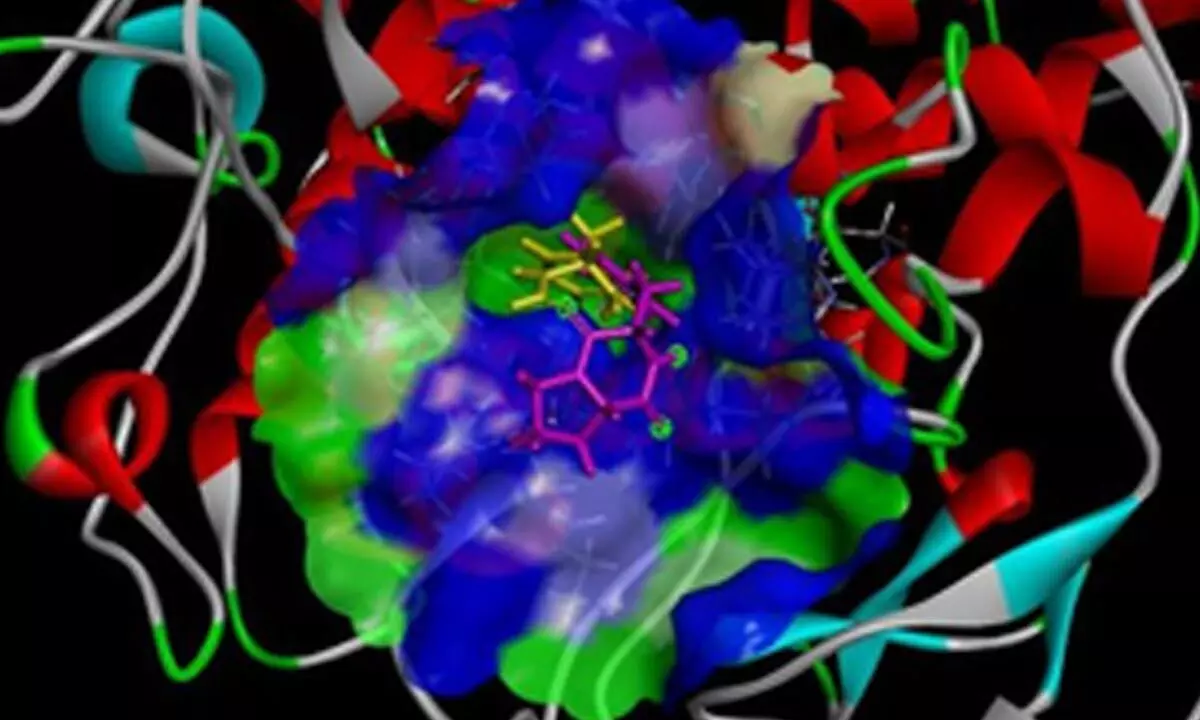Live
- Conduct Tiruchanoor fest akin to Tirumala’s: TTD EO
- Allocate Khelo India funds for sports infra in SVU
- BJP stages protests in various dists over alleged Waqf encroachments
- CM defends BPL ration card cancellation
- Industry should make use of Rs 1-trn ANRF fund: Goyal
- TTD chairman meets Telangana CM
- MITS faculty awarded with PhD by VTU
- Sannapureddy takes charge as RTC regional chairman
- Improve state of public parks, civic chief instructs officials
- Education Minister doesn’t know Kannada
Just In
New skin-derived compound shows promise in combating hyperpigmentation

New research has identified a skin-derived compound, known as Corynebacterium tuberculostearicum (C. tuberculostearicum), a bacterium commonly found on human skin that could combat hyperpigmentation.
New Delhi: New research has identified a skin-derived compound, known as Corynebacterium tuberculostearicum (C. tuberculostearicum), a bacterium commonly found on human skin that could combat hyperpigmentation.
Melanin protects the skin, the body's largest organ and a vital component of the immune system—from the damaging effects of ultraviolet (UV) radiation.
When the skin is exposed to UV radiation, melanin production is stimulated in melanocytes, with tyrosinase playing a key role in the biosynthetic pathway. with disruptions in this pathway resulting in hyperpigmentation.
To address this, tyrosinase inhibitors that suppress melanin synthesis have become valuable in the cosmetic industry. Unfortunately, some of these compounds, such as hydroquinone, have been found to be toxic to human skin, causing issues like vitiligo-like symptoms and rashes. Consequently, hydroquinone is no longer recommended for use.
The increasing demand for safer alternatives has sparked a race to discover tyrosinase inhibitors from microbes that produce compounds with low toxicity.
The study, led by Assistant Professor Yuuki Furuyama from the Department of Applied Bioscience at TUS, was published in the International Journal of Molecular Sciences on July 4, 2024.
“Bacteria that reside on our skin and evade immune responses often become commensals, neither benefiting nor harming us. We chose to investigate metabolites produced by these commensal bacteria for their potential as tyrosinase inhibitors. These natural skin-derived products exhibit low toxicity, making them inherently safer,” explained Dr Furuyama.
After screening over 100 skin-derived bacteria, the team identified C. tuberculostearicum as a producer of a potent tyrosinase-inactivating compound. Their assays utilized tyrosinase from the mushroom Agaricus bisporus to confirm inhibition. Subsequent experiments pinpointed the active compound as cyclo(L-Pro-L-Tyr).
“Our goal was to understand how cyclo(L-Pro-L-Tyr)-- a compound that blocks melanin production, reducing skin dark spots. disrupts tyrosinase activity," explained Dr. Furuyama. Our findings revealed that cyclo(L-Pro-L-Tyr) mimics L-Tyr--an amino acid that helps produce melanin in the skin, binding to and obstructing the substrate-binding pocket of mushroom tyrosinase. This interference renders the enzyme inactive.”
Understanding the potential of cyclo(L-Pro-L-Tyr) as a skin probiotic for hyperpigmentation, the research is optimistic about its non-toxic nature and its antimicrobial, antioxidant, and anticancer properties.

© 2024 Hyderabad Media House Limited/The Hans India. All rights reserved. Powered by hocalwire.com






